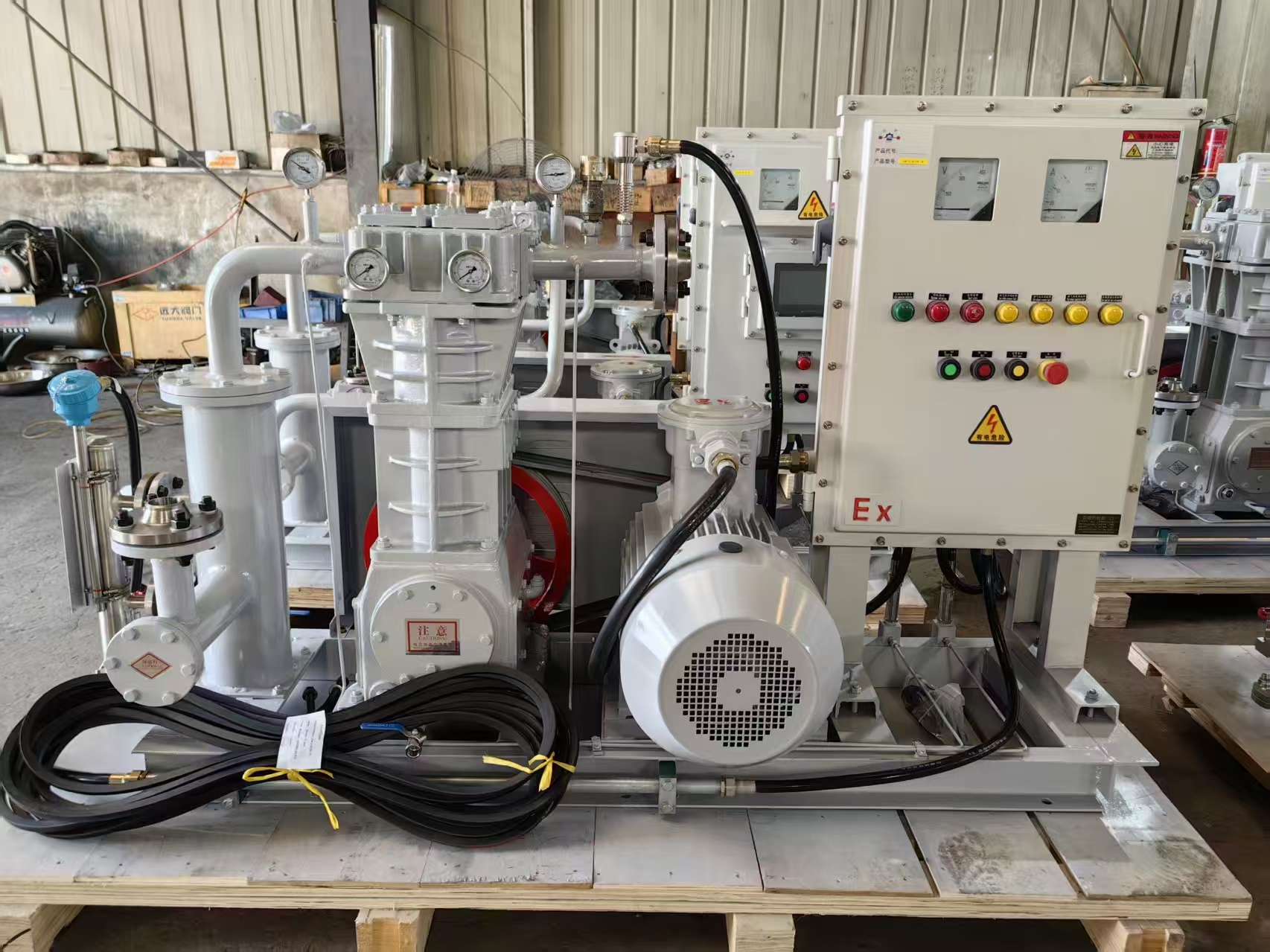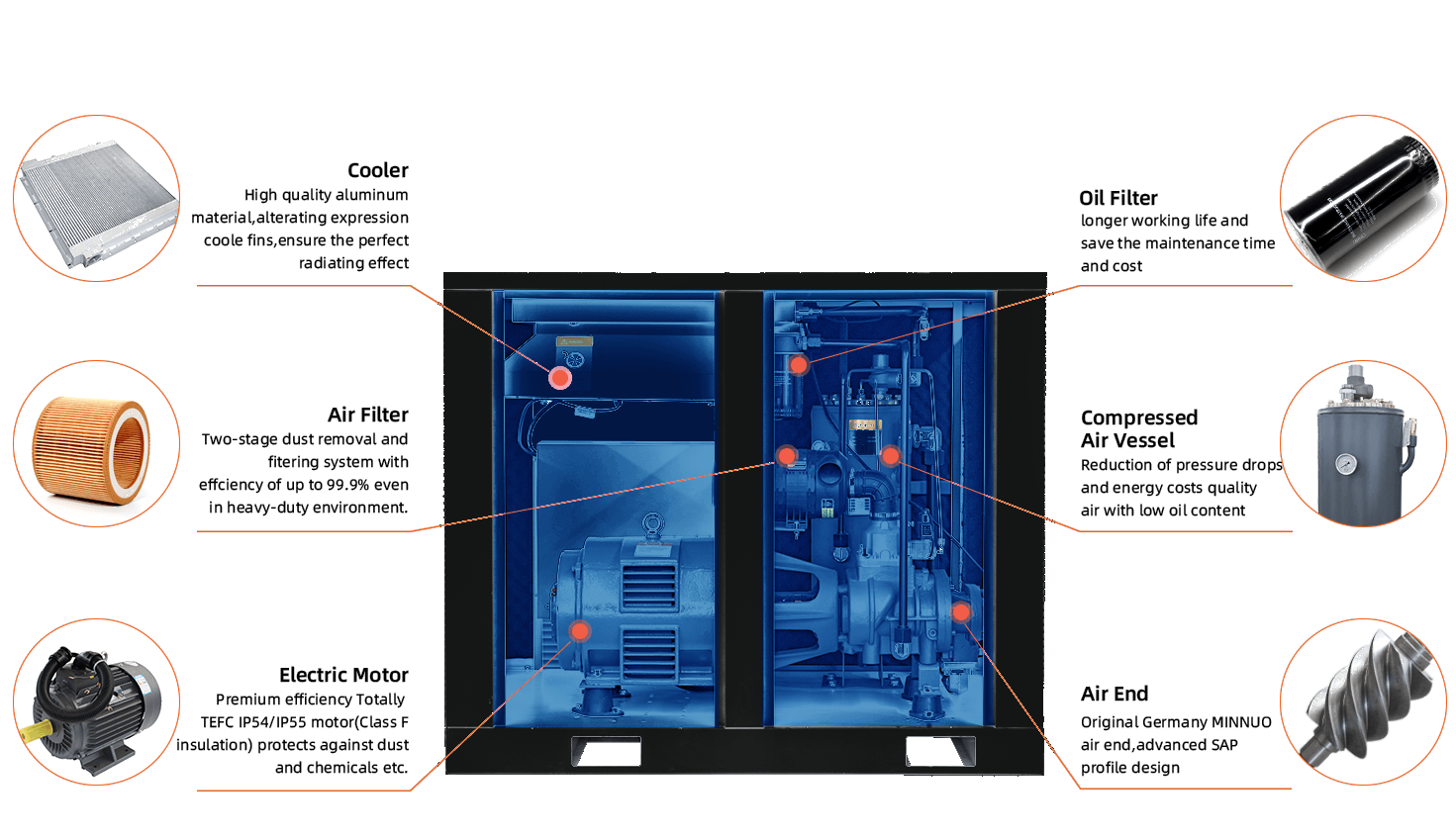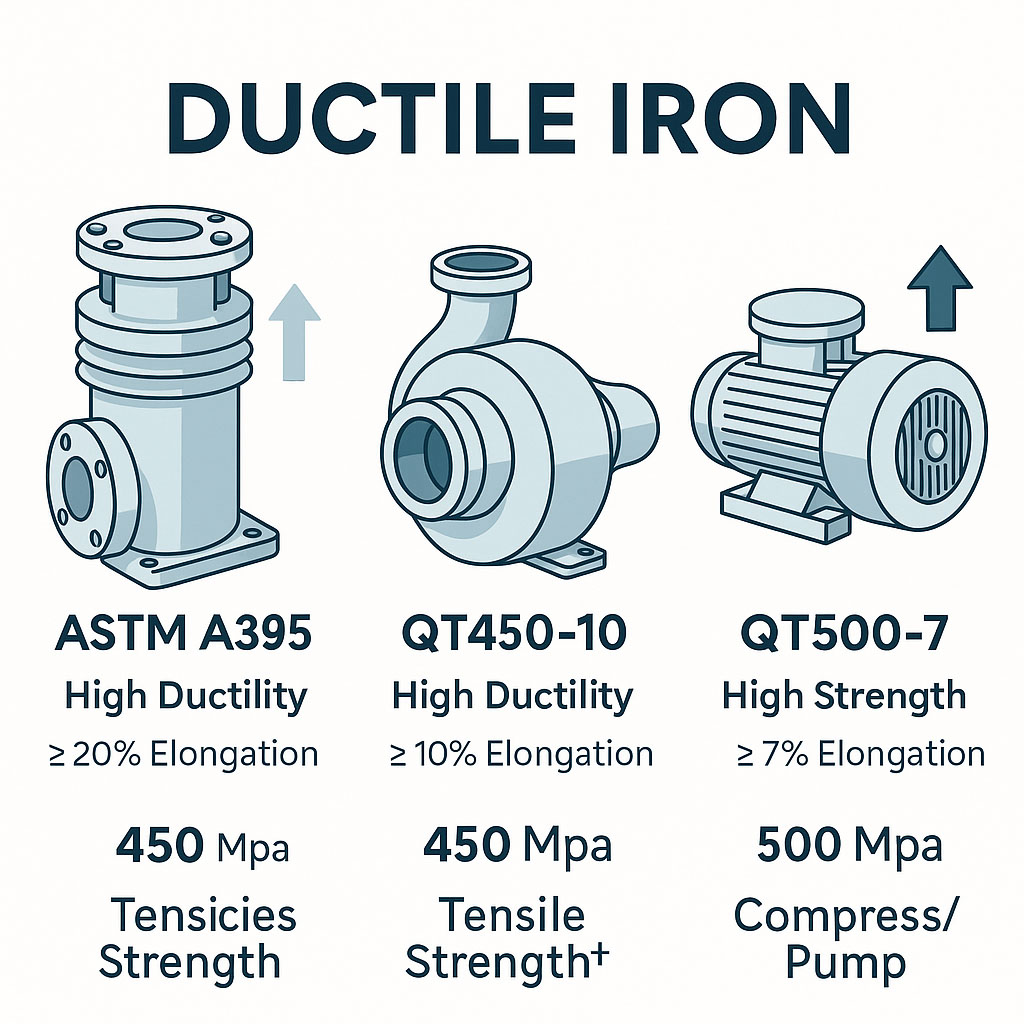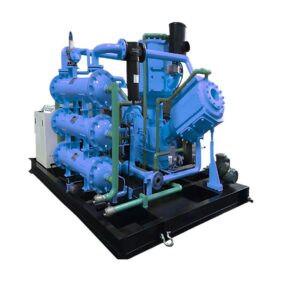导言
隔膜式氢气压缩机的优势在于 全球搜索量实现两位数增长 供应商争相为快速崛起的绿色氢能项目提供设备。独立分析师目前认为 隔膜式氢气压缩机 约为 美国 $ 12 亿美元(2024 年爬到 美国 $ 到 2033 年 25 亿美元-其强劲的年复合增长率超过 9%,已经超过了传统活塞技术。与此同时,围绕 # 隔膜压缩机 和 # 氢 表明 EPC 承包商、系统集成商和原始设备制造商正在积极比较解决方案,而不仅仅是浏览。这些趋势凸显了以超净、超高压性能为中心的明确采购意向。
为何如此热闹?纯度与压力
项目业主选择 无油隔膜压缩机 因为不锈钢膜可将润滑剂完全阻隔在工艺气体之外,从而保护 PEM 燃料电池堆并消除下游过滤。现代三级框架通常可提供 1000 巴排放压力有资格成为 1000 巴高压氢气压缩机同时,在每次快速充气时,隔膜仍能保持完整的寿命。 加氢站压缩机 现场。这些特点再加上低振动和近乎无声的操作,使操作员有信心在城市仓库和半导体工厂中使用滑橇。
主要优势一览
-
超纯气体(< 1 ppm): 不锈钢隔膜可防止交叉污染,是燃料电池流动性或半导体管道的理想选择。
-
高效率: 三级液压系统的机械效率达到 92%,每公斤 H2 可节约千瓦时。
-
模块化滑橇设计: 出厂前经过测试的模块 加氢站压缩机从而将现场劳动力减少 40%。
-
快速投资回报率: 较低的维护成本和碳信用额度收入可在 18 个月内收回投资成本(典型值为 8,000 小时)。
行业契合度与投资回报率驱动因素
化学品生产商、可再生能源开发商和车队运营商都表示 低资本支出的可扩展性 作为投资回报率的决定性杠杆。通过从电解槽出口直接压缩至 1000 bar,资产所有者可省去中间环节,缩小占地面积,并节省多达 美国 $ 320 k 每个工作站。现在,数字双胞胎优化了隔膜的更换周期,将平均无故障时间延长了 25%。随着碳排放法规的收紧,一种 无油隔膜压缩机 同时还避免了润滑油处理费用和相关的范畴 1 排放,进一步改善了资产负债表。
常见问题
Q1.隔膜多久更换一次?
对于标准工作周期,检查时间为 8000 小时;更换套件的成本不到总拥有成本的 2%。
Q2.我可以改装现有加油站吗?
是的。模块化框架符合 SAE J 2601 加油协议,只需 6 平方米的垫子空间。
Q3.氦气或 CO₂ 服务如何?
同样的无油隔膜压缩机结构可处理高达 700 巴的惰性气体、有毒气体和稀有气体,只需对材料稍作升级即可。
准备指定您的下一代 隔膜式氢气压缩机?请联系我们的工程服务台,我们将在 48 小时内为您提供循环建模、经 CFD 验证的尺寸和预算定价。











